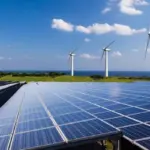China and Japan Seek a New Era of Cooperation at Expo 2025 Osaka
At the heart of Expo 2025 Osaka, a renewed spirit of collaboration and cultural exchange is taking shape between China and Japan. As the world’s eyes turn to this major international event, leaders from both countries are emphasizing the importance of building a constructive and stable relationship that meets the demands of a rapidly changing era. The China Pavilion, with its theme “Brilliant China, Shared Future,” has become a focal point for dialogue, cultural celebration, and hopes for deeper mutual understanding.
- China and Japan Seek a New Era of Cooperation at Expo 2025 Osaka
- Why Expo 2025 Osaka Matters for China-Japan Relations
- Cultural Diplomacy: The Role of the China Pavilion
- Historical Context: A Relationship Shaped by Centuries
- Expo 2025 Osaka: A Platform for Global Dialogue
- Looking Forward: The Significance of Cultural and Economic Exchange
- In Summary
Why Expo 2025 Osaka Matters for China-Japan Relations
World Expos have long served as platforms for nations to showcase their achievements, share innovations, and foster international cooperation. Expo 2025 Osaka, scheduled to run from April 13 to October 13, 2025, is no exception. With the theme “Designing Future Society for Our Lives,” the event aims to address global challenges and promote sustainable development. For China and Japan, two of Asia’s largest economies and most influential cultures, the Expo offers a unique opportunity to reset and strengthen their bilateral ties.
China’s Vice-Premier He Lifeng, speaking at the China National Pavilion Day, underscored the historical depth of the relationship: more than 2,000 years of exchanges in culture, technology, and philosophy have bound the two nations together. He stated,
“More than 2,000 years of friendly exchanges have proven the two neighbors cannot move away from each other.”
This sentiment was echoed by Japanese officials, who highlighted the enduring nature of the relationship and the potential for the Expo to usher in a new chapter of cooperation.
Economic Ties: Trade, Investment, and Tourism
China and Japan are deeply intertwined economically. China is Japan’s largest trading partner, while Japan ranks as China’s third-largest. In 2023, bilateral trade between the two countries exceeded $300 billion, encompassing everything from automobiles and electronics to agricultural products and services. This robust economic relationship is further strengthened by significant investment flows and joint ventures in sectors such as technology, manufacturing, and green energy.
Tourism and people-to-people exchanges also play a vital role. Before the COVID-19 pandemic, millions of Chinese and Japanese citizens visited each other’s countries annually, fostering greater understanding and appreciation of each other’s cultures. As travel restrictions ease, both governments are eager to revive and expand these exchanges, seeing them as essential to long-term stability and friendship.
Cultural Diplomacy: The Role of the China Pavilion
The China Pavilion at Expo 2025 Osaka is more than just an exhibition space—it is a symbol of China’s desire to present itself as a “genuine, beautiful, credible, and lovable” nation, as described by Vice-Premier He Lifeng. The Pavilion’s programming includes performances of ethnic dances, traditional music, opera, martial arts, acrobatics, and even street dance, all designed to showcase the diversity and richness of Chinese culture.
Since its opening, the Pavilion has attracted over 770,000 visitors and hosted more than 20 events, including provincial and municipal activity weeks, corporate days, and themed celebrations. These activities not only entertain but also educate visitors about China’s history, regional diversity, and contemporary achievements.
Building Bridges Through Shared Experiences
Japan’s Minister of Economy, Trade and Industry, Yoji Muto, emphasized the importance of these exchanges, noting that cultural, technological, and philosophical interactions have greatly contributed to both nations’ development. He expressed hope that the Expo would further advance China-Japan exchanges, particularly in areas such as innovation, environmental sustainability, and youth engagement.
“I sincerely hope that the Expo will further advance China-Japan exchanges,” said Muto, highlighting the potential for the event to deepen mutual understanding and cooperation.
Historical Context: A Relationship Shaped by Centuries
The relationship between China and Japan is one of the world’s oldest and most complex. Over the centuries, the two countries have experienced periods of intense cultural exchange, economic partnership, and, at times, conflict. From the transmission of Buddhism and Chinese writing to Japan in ancient times, to the turbulent years of the 20th century, the bilateral relationship has been marked by both cooperation and rivalry.
In recent decades, both governments have worked to overcome historical grievances and focus on shared interests. High-level dialogues, parliamentary friendship associations, and joint cultural initiatives have all contributed to a gradual improvement in ties. The Osaka Expo is seen as a continuation of these efforts, providing a neutral ground for engagement and mutual learning.
Challenges and Opportunities Ahead
Despite the positive atmosphere at Expo 2025, challenges remain. Issues such as territorial disputes in the East China Sea, differing approaches to regional security, and competition in high-tech industries continue to test the relationship. However, both sides recognize the importance of dialogue and cooperation in addressing these challenges.
Hiroshi Moriyama, secretary-general of Japan’s Liberal Democratic Party and chairman of the Japan-China Parliamentary Friendship Association, expressed optimism about the future:
“I sincerely hope visitors from around the world will explore the China Pavilion, experience the charm of China’s diverse regions, and deepen mutual understanding.”
Expo 2025 Osaka: A Platform for Global Dialogue
Expo 2025 Osaka is not just about China and Japan—it is a global event that brings together more than 150 countries and international organizations. The Expo’s focus on designing a future society aligns with the United Nations’ Sustainable Development Goals, encouraging participants to share solutions for health, environment, and technology challenges.
For China and Japan, participation in the Expo is an opportunity to demonstrate leadership in addressing global issues. Both countries are investing heavily in green technologies, digital innovation, and public health initiatives. By collaborating at the Expo, they can set an example for other nations and contribute to a more sustainable and peaceful world.
Looking Forward: The Significance of Cultural and Economic Exchange
The events at Expo 2025 Osaka highlight the enduring value of cultural diplomacy and economic partnership. As the world becomes more interconnected, the ability of nations to work together across differences is increasingly important. The China Pavilion’s success in attracting visitors and fostering dialogue is a testament to the power of shared experiences and mutual respect.
While challenges remain, the commitment of leaders on both sides to building a “constructive and stable bilateral relationship” offers hope for the future. As the Expo continues, the world will be watching to see how China and Japan navigate their complex relationship and contribute to a brighter, more cooperative global community.
In Summary
- China and Japan are using Expo 2025 Osaka as a platform to strengthen their long-standing relationship and promote cultural and economic exchange.
- The China Pavilion has become a focal point for showcasing Chinese culture and fostering dialogue, attracting over 770,000 visitors since opening.
- Leaders from both countries emphasize the importance of cooperation in trade, innovation, and people-to-people exchanges.
- Despite historical and current challenges, both sides are committed to building a stable and constructive partnership for the future.
- Expo 2025 Osaka serves as a global stage for addressing shared challenges and advancing sustainable development.




